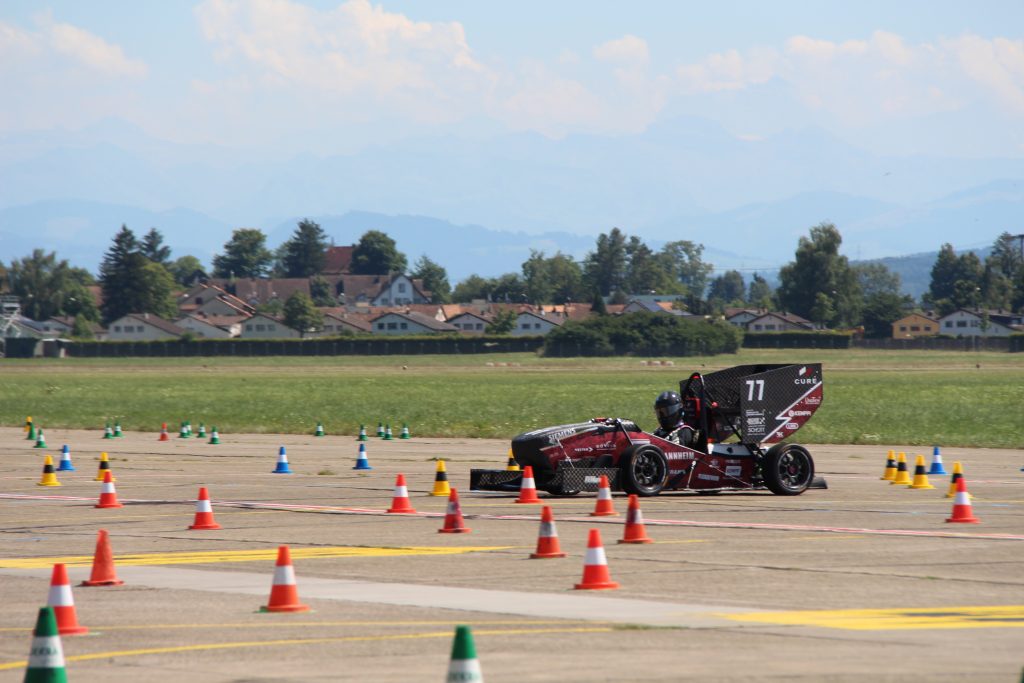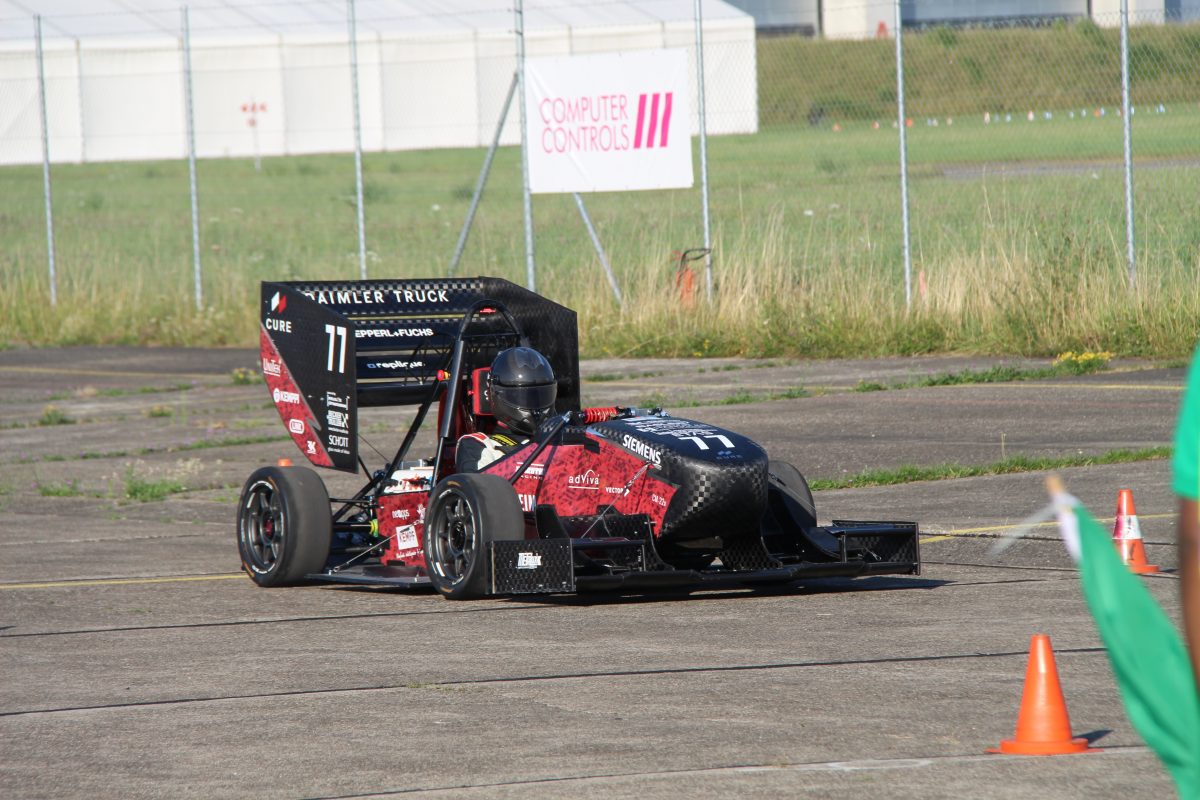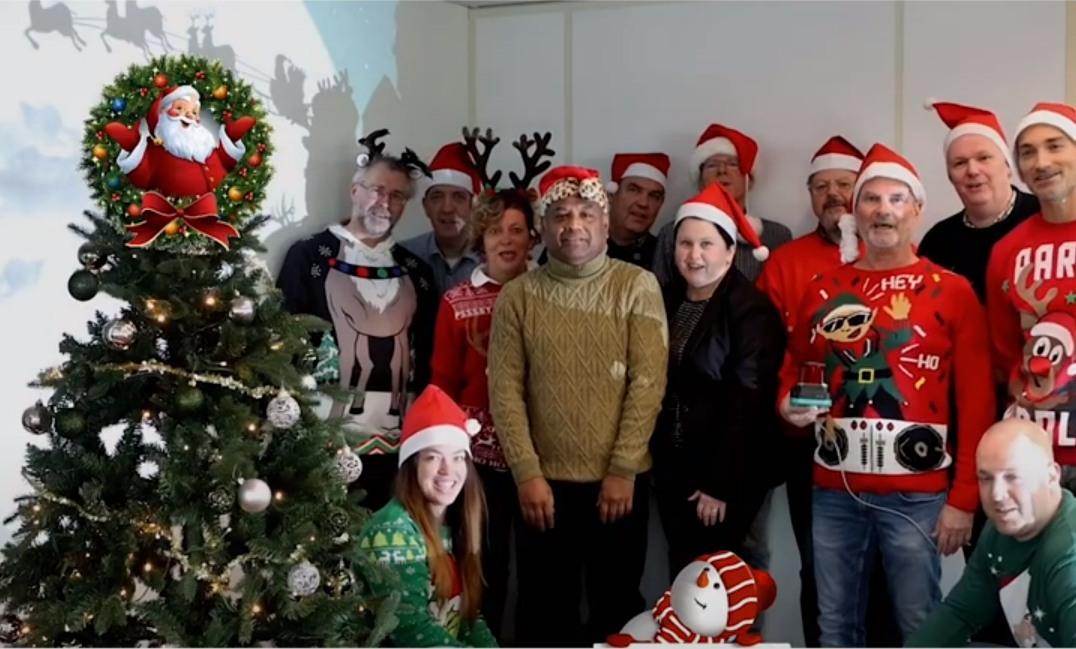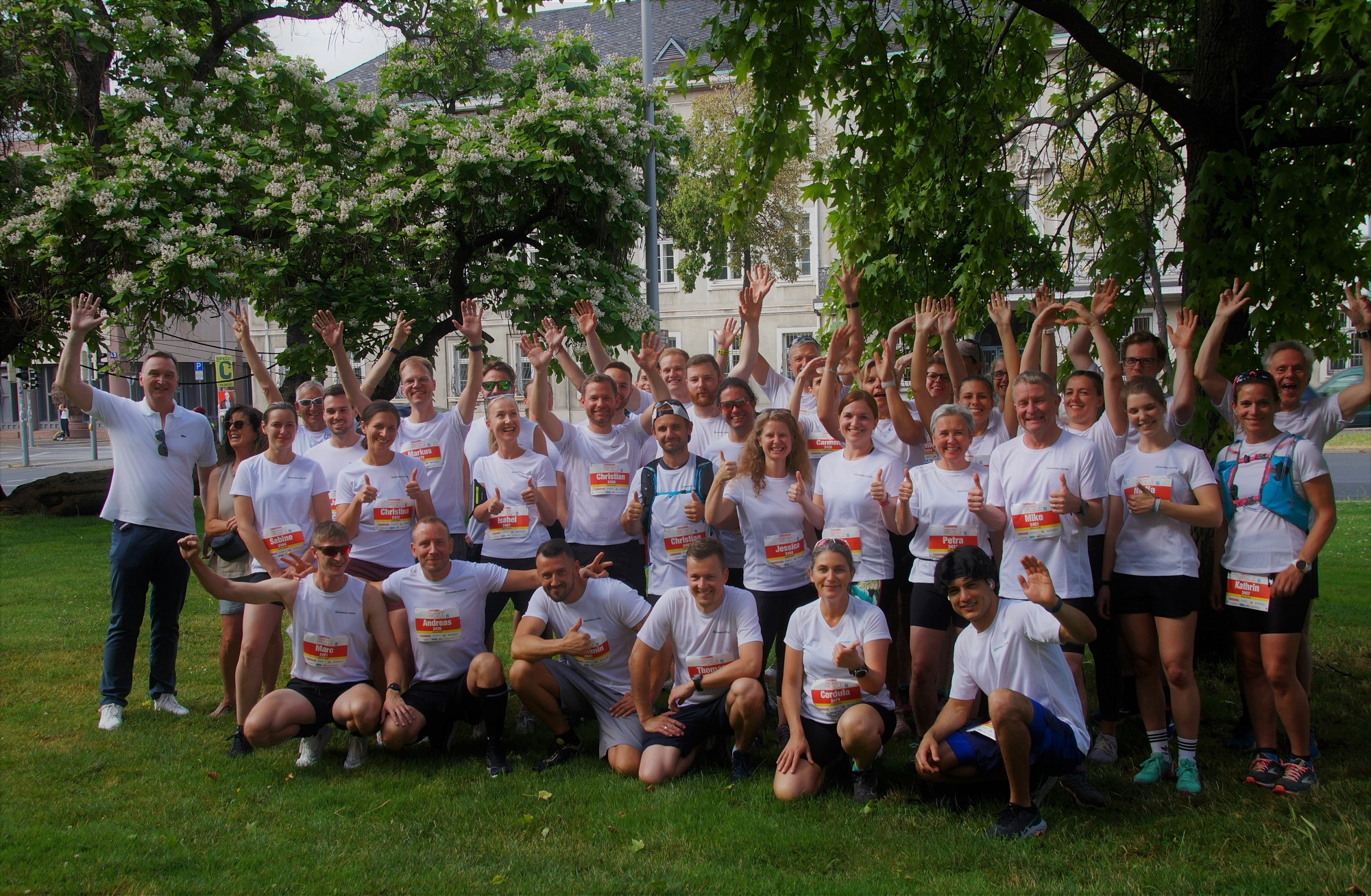CURE Mannheim, a student club at Baden-Wuerttemberg Cooperative State University (DHBW) in Mannheim, is dedicated to building an electric race car every year and then putting it to the test in international race events. Maren Klotz, currently Continuation Manager at Pepperl+Fuchs, was an active part of the team as a student during the 2021/2022 season. In this interview, she offers insights into the project which is about technical know-how and a lot more.
Maren, what is CURE Mannheim e.V.?
CURE (Cooperative University Racecar Engineering) is a student club at Baden-Wuerttemberg Cooperative State University (DHBW) in Mannheim. It has over 70 members – students from the fields of engineering, technology, and business. The club’s mission is to build a purely electric race car from scratch every year and enter it in the Formula Student competition. The goal is to participate in the contest every season, while continuously refining the design of the race car. The team is divided into two areas. First, there’s the organizational team, which handles tasks such as marketing, sponsoring, and controlling. That was the team I was on. And then there’s the technology and engineering team, which builds the vehicle. The club is a volunteer organization which is funded entirely by donations and sponsoring. Pepperl+Fuchs also supported us with a donation in the 2021/2022 season. Everyone really puts their all into it. It’s awesome to work on a car and then see it on the track in the Formula Student event.
The competition
What is Formula Student?
Formula Student is an international design competition in which teams from different higher education institutions all over the world go head-to-head with their self-built race cars at international events over the summer. The first step at each event is what is known as “scrutineering,” where the race car undergoes a technical inspection to make sure all the rules have been followed. This is because the vehicles have to be built to certain specifications. Then, after the car has been inspected thoroughly, there are further tests to check things like the brakes and roadworthiness in rainy conditions. Once those checks are done, the team gets to present the business plan and the technical designs. And then the car can finally take to the track! This year, we qualified for events in Switzerland, Austria, Hungary, and Germany.
What were your tasks within the team?
I was part of the organizational team and took over relatively quickly as head of the team preparing our business plan. The business plan includes a use case – in other words, a description of how the car could be used and marketed on the public market. The content is fictitious, of course. Then in September 2021, at the start of the new season, I got to step up as the organizational project manager.
Autonomous electric race car
The car is named Emma. What’s special about it?
That’s right. The “E” stands for “electric,” and the “A” for “autonomous.” Emma can even drive without a human driver, fully autonomously. The car weighs almost 230 kg and is limited to 80 kW of power. And since people always ask, its maximum speed is about 120 km/h.

Learning from mistakes
Were you happy with the results at the events? What came next?
All in all, our participation in the events was successful. Unfortunately, however, we missed our target of finishing in the top ten, since our brake had a design flaw, which made each of the races difficult for us. But we were able to learn from this flaw and further develop our understanding of construction, which is also the purpose of the project.
We attended a few press conferences after the races. We also showed our vehicle at various events to attract new members to the club, since several of the members, including myself, were finishing their degree this year. The new season started in September, and the whole construction cycle started all over again at CURE Mannheim. I’m really happy to be able to continue supporting the project as part of the alumni organization.
Would you like to join our vibrant team? Discover compelling career opportunities at our website.



